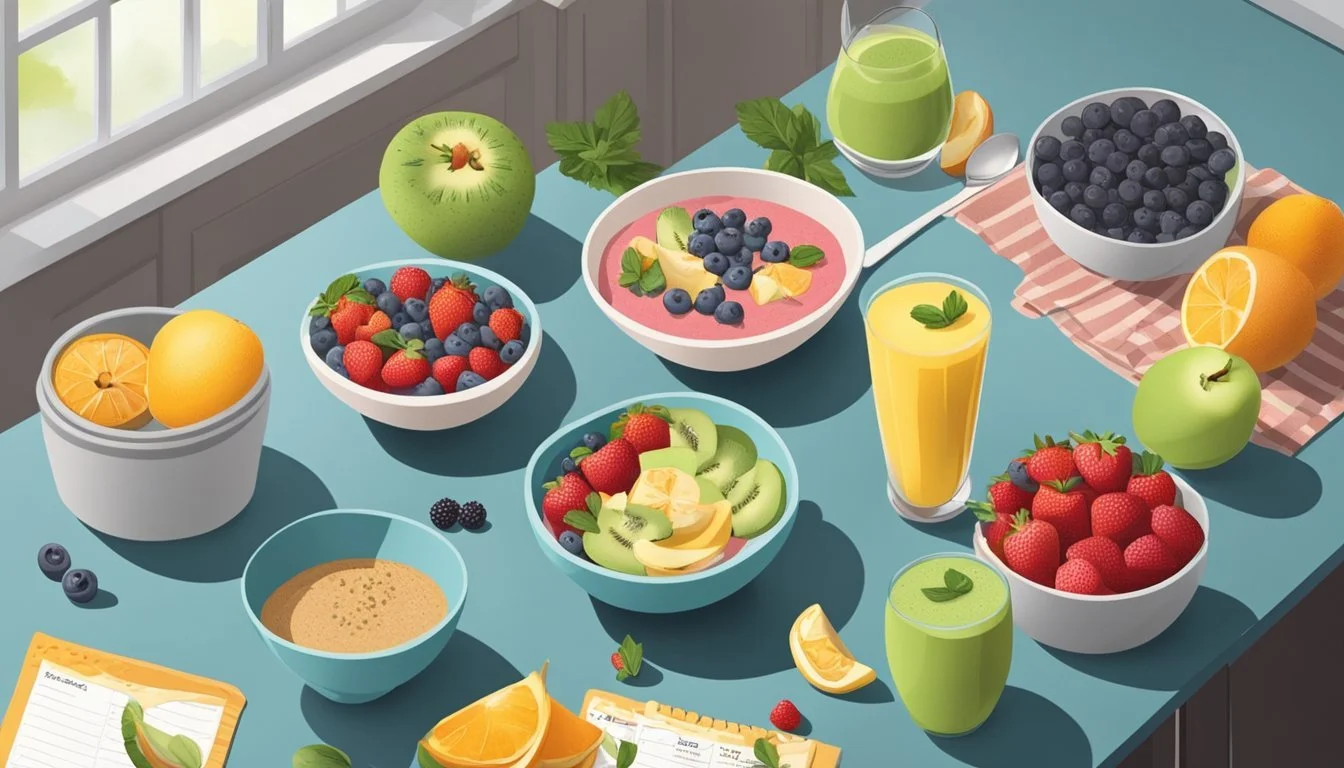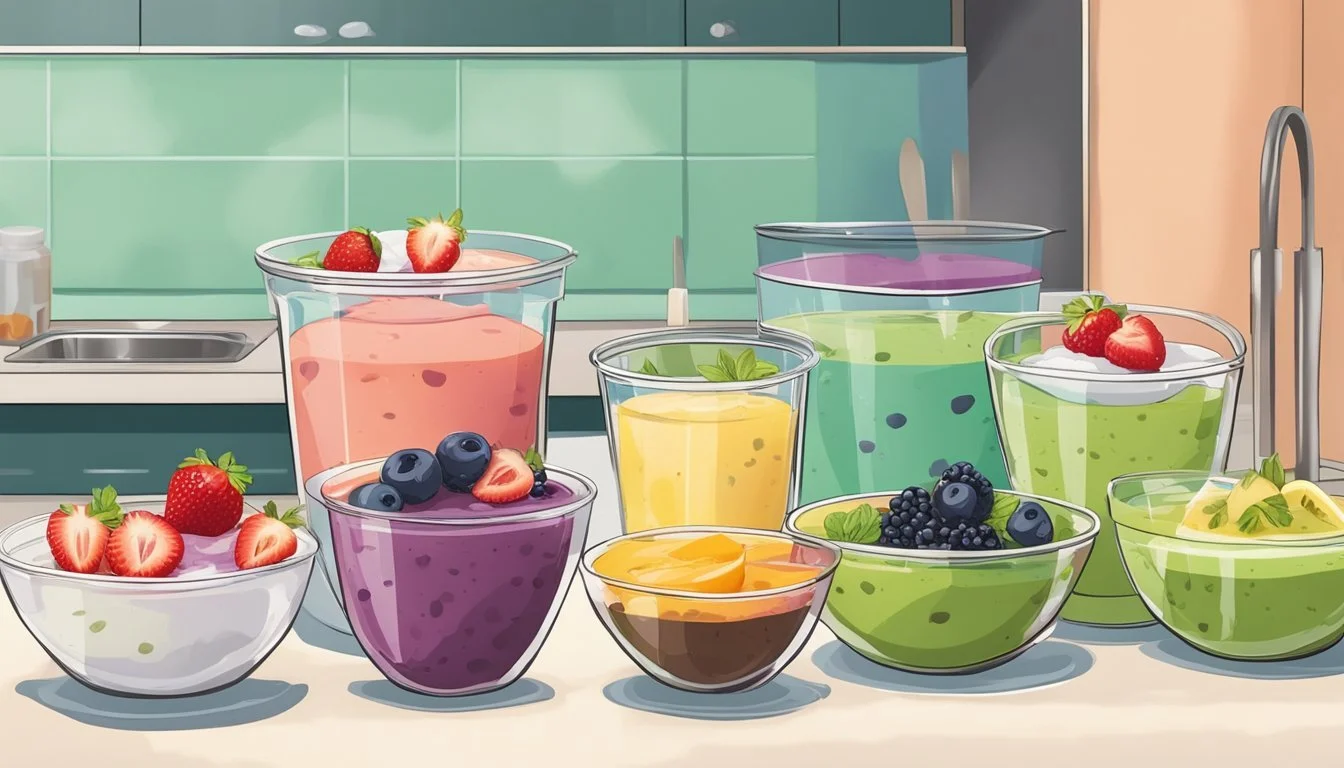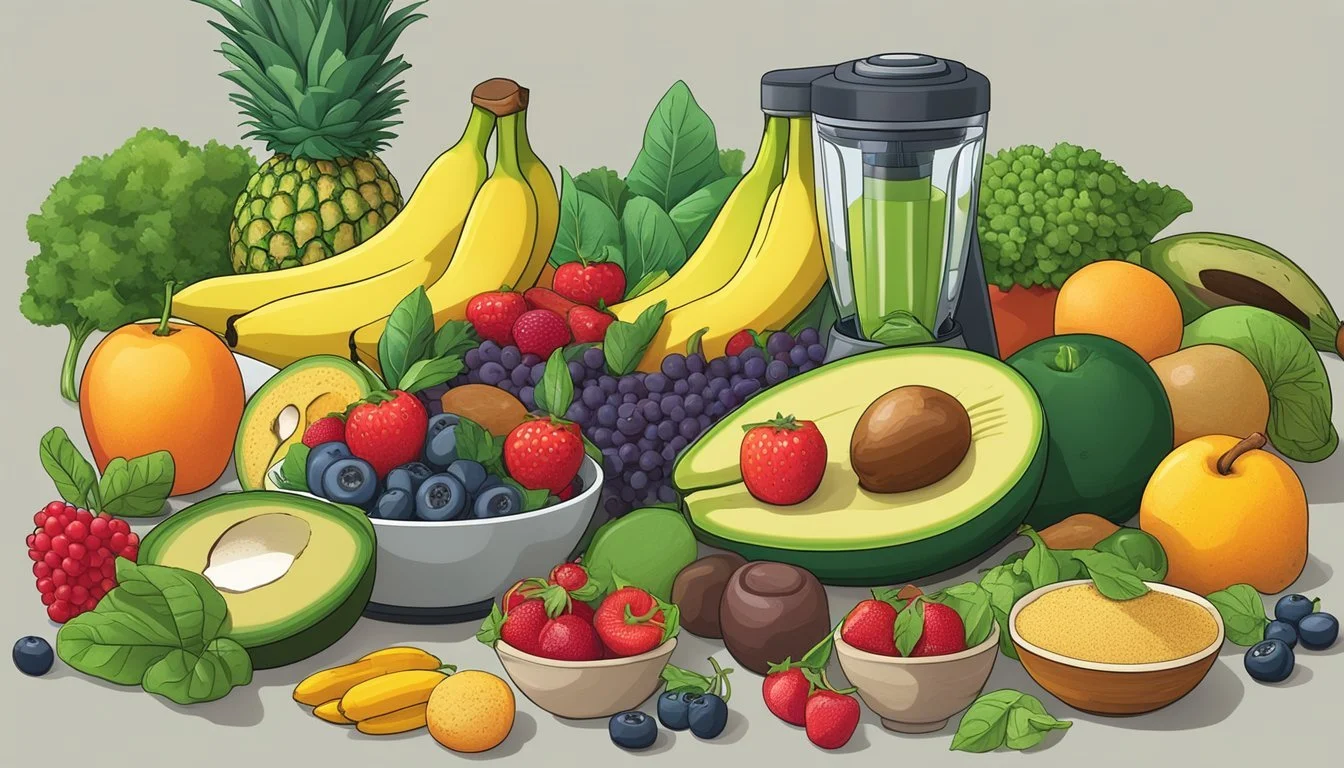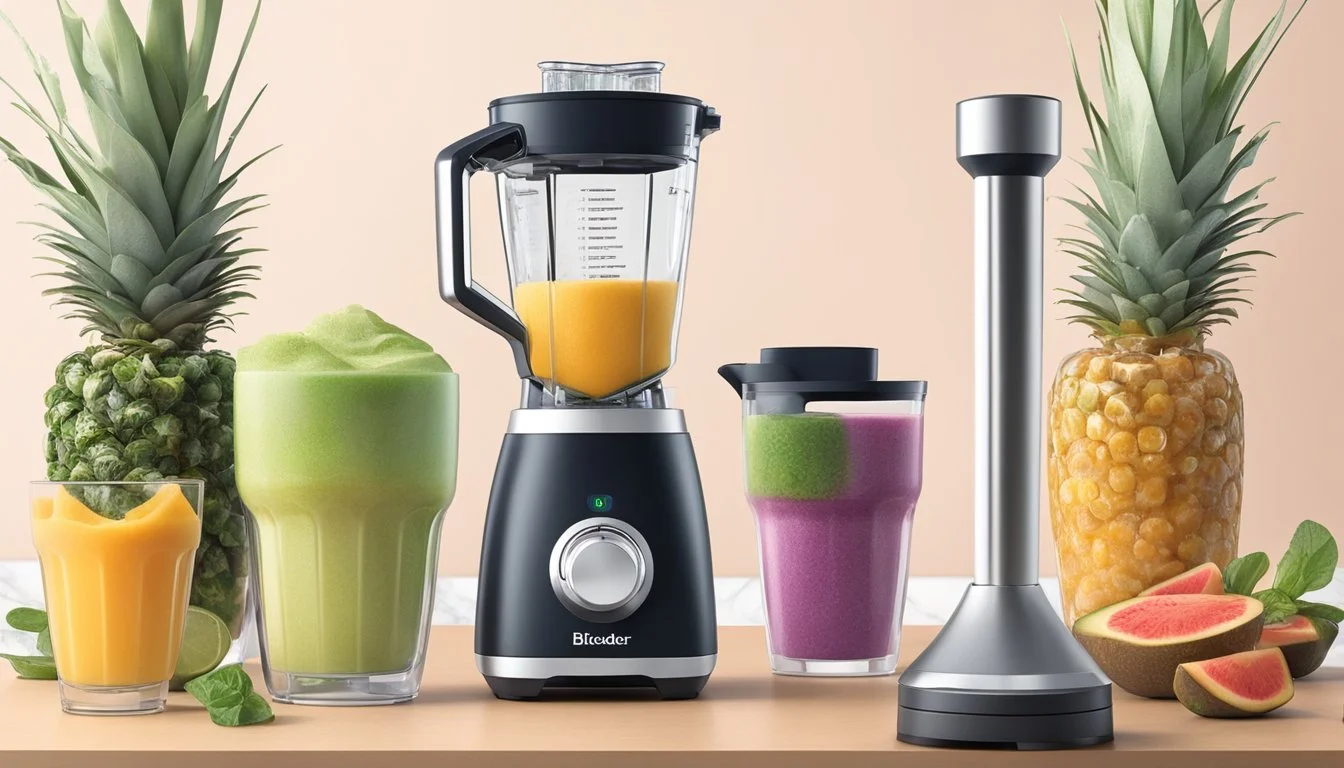How Long Do Freshly Prepared Smoothie Bowls Last?
Understanding Shelf Life and Storage Tips
A freshly prepared smoothie bowl offers a tasty and nutritious option for those looking to enjoy a blend of fruits, vegetables, and other health-boosting ingredients. The vibrant colors and fresh flavors make smoothie bowls a popular choice for breakfast, a mid-day snack, or even a light meal. The freshness of these smoothie bowls is not only key to their appeal but also to their nutritional value, as they are richest in vitamins and enzymes shortly after being made.
When it comes to storage, smoothie bowls are best consumed immediately after preparation to enjoy their optimal taste and health benefits. However, given the busy nature of modern life, immediate consumption is not always possible. In such cases, smoothie bowls can be refrigerated, which slows down the oxidation process that leads to nutrient degradation and flavor loss. Under proper refrigeration, a sealed and clean container can extend the life of a smoothie bowl to 1-2 days while maintaining most of its freshness and nutritional content.
It is crucial to note that the longevity of a smoothie bowl in the refrigerator will be affected by its ingredients. Dairy-based smoothies, for example, are more perishable and might not last as long as those made solely with fruits and vegetables. To ensure the quality and safety of refrigerated smoothie bowls, they should be stored in airtight containers and kept at a consistent temperature, with the understanding that sooner is always better when it comes to consumption.
Fundamentals of Smoothie Preservation
Preserving the quality of a smoothie bowl involves mitigating oxidation and choosing ingredients that maintain freshness. Here are the core considerations for extending the longevity of these nutritious blends.
Understanding Oxidation
Oxidation is a process where the ingredients in a smoothie, especially fruits and vegetables, react with the oxygen in the air. This can lead to the degradation of vitamins and a change in texture and color. To combat this, one can add lemon juice, which is rich in vitamin C and acts as an antioxidant, helping to preserve the color and nutrient content of the smoothie bowl.
Approaches to minimize oxidation:
Limit exposure to air by using airtight containers.
Add a splash of lemon juice or other citrus to slow down the oxidation process.
Role of Ingredients
The components in a smoothie bowl determine not only the taste and nutritional value but also how well it keeps in the fridge. Ingredients high in dairy or those with delicate vitamins that degrade quickly can affect longevity.
Ingredients impact on preservation:
Dairy-based ingredients might shorten shelf life to 1 day.
Non-dairy, less perishable items extend freshness, potentially up to 1-2 days when refrigerated.
Selecting the right ingredients and understanding the chemistry behind oxidation can significantly lengthen the time a freshly prepared smoothie bowl remains enjoyable and nutritious.
Preparation and Storage Techniques
Ensuring the longevity of smoothie bowls requires attention to both their preparation and storage. It is essential to blend the ingredients thoroughly and store the mixture correctly to maintain freshness.
Proper Blending Methods
When preparing a smoothie bowl, a high-quality blender like a Ninja Blender guarantees a smooth and even consistency. Start with the liquid base and softer ingredients, then add frozen fruits or ice to ensure all components are evenly blended.
Choosing the Right Containers
To store smoothie bowls effectively, one must use an airtight container. Glass mason jars are often recommended due to their excellent sealing properties, ensuring freshness and preventing freezer burn.
Optimal Freezing Practices
For extended storage, freezing is the best option. Pour the smoothie bowl mixture into the chosen container, leaving a small gap at the top to allow for expansion. The freezer will keep the smoothie bowl edible for up to three months. When ready to consume, thaw the mixture in the refrigerator for 8 hours or at room temperature for a quicker defrost.
Factors Affecting Shelf Life
The longevity of a smoothie bowl is influenced by its components and the conditions under which it is stored. Precise ingredient choices and storage temperatures are critical to extending shelf life.
Impact of Ingredient Selection
Ingredients play a pivotal role in determining the shelf life of a smoothie bowl. High-quality, fresh ingredients can prolong preservation. Dairy products, for instance, could potentially shorten shelf life due to their sensitivity to bacteria growth. Protein powders, when included, may have preservatives that extend the life of the smoothie bowl.
Freshness of ingredients: Ripe, fresh produce yields a longer-lasting smoothie bowl.
Acidity: Ingredients like lemon juice may help preserve the smoothie bowl for slightly longer.
Temperature and Environment
A smoothie bowl's environment dramatically dictates its shelf life. Storing smoothie bowls in a refrigerator is essential to slow down bacterial growth and postpone spoilage.
Recommended refrigeration temperature: Between 32°F (0°C) and 40°F (4°C).
Shelf life timeline in the fridge:
With dairy: Up to 1 day.
Without dairy: Typically 24-48 hours.
Bananas and frozen fruit: May affect the texture over time, impacting palatability before safety.
Signs of Spoilage and Quality Loss
Freshly prepared smoothie bowls will not retain their quality indefinitely. Recognizing the signs of spoilage and quality loss is vital to ensure one's health and enjoyment of the smoothie bowl.
Visual and Olfactory Indicators
The initial tell-tale signs of a degrading smoothie bowl are visual changes and smell. One may notice brown discoloration, particularly in smoothies with banana or apple, indicative of oxidation. Separation of liquid and solid components is another visual clue. An off-smell is a clear sign that the smoothie bowl has begun to spoil and may be unsafe for consumption.
Texture and Taste Assessment
Aside from visual and smell tests, the texture and taste of a smoothie bowl are good indicators of its freshness. A fresh smoothie bowl should be smooth and creamy. If the smoothie bowl is starting to develop ice crystals or has signs of freezer burn from being in the freezer too long, it indicates a loss of quality. A sour or unpleasant taste is a definite sign that the smoothie bowl should no longer be consumed.
Best Practices for Longer Lasting Smoothie Bowls
To maximize the shelf life of freshly prepared smoothie bowls, one should adopt effective storage practices and consider the benefits of batch preparation. Proper sealing methods and the choice of blender can also play a crucial role in maintaining freshness and texture.
Pre-portioning and Batch Making
When it comes to meal prep, pre-portioning smoothie ingredients into single servings can streamline the blending process and reduce waste. Users can assemble their fruit and vegetable mix, along with any protein powders or supplements, into airtight containers or bags and store them in the freezer until needed.
For batch making, blending multiple servings in a high-performance blender, like a Vitamix or Nutribullet, ensures a consistent and smooth texture. These powerful blenders can handle large quantities efficiently. After blending, it is advisable to divide the smoothie bowl into portions and store each serving in an airtight container with a lid to protect against flavor loss and contamination.
Blender Type Batch Capacity Note Vitamix Large Ideal for smooth and even blending Nutribullet Small to Medium Convenient for single servings and small batches
Innovative Sealing Techniques
The longevity of a smoothie bowl greatly depends on the sealing method used during storage. Using vacuum blenders or airtight lids on containers can significantly extend the shelf life by minimizing oxidation and nutrient loss. Vacuum blenders remove air before blending, which can help in reducing the amount of foam and separation in the smoothie bowl, maintaining its quality and taste for longer periods.
For individuals who do not have vacuum blenders, manually sealing the smoothie bowl in an airtight container and ensuring that there is minimal air space at the top can also be effective. This can be further improved by adding a layer of cling film directly on the surface before closing the container with an airtight lid, thus reducing air exposure even more.
Healthy Additions to Enhance Your Smoothie
Adding specific ingredients to your smoothie can significantly boost its nutritional value. This section explores how the strategic inclusion of greens, proteins, and a variety of fruits, nuts, and seeds can enrich your smoothie, making it not only delicious but also a powerhouse of nutrients.
Incorporating Greens and Proteins
Integrating greens like spinach and kale into smoothies is an effortless way to increase your intake of essential vitamins and minerals. These leafy greens are low in calories yet high in fiber, antioxidants, and a host of micronutrients.
Proteins can be added in the form of yogurt or Greek yogurt, offering a creamy texture and a tart flavor that complements the natural sweetness of fruits. These additions contribute to muscle repair and can keep you feeling full longer.
Greens:
Spinach: Rich in iron and calcium
Kale: High in vitamin C and K
Proteins:
Yogurt: Contains probiotics for gut health
Greek Yogurt: Higher in protein than regular yogurt
Fruits, Nuts, and Seeds Varieties
Fruit selections bring natural sweetness and fiber to smoothies while offering a range of antioxidants. Berries, bananas, and mangoes are popular for their taste and blendability. When it comes to nuts and seeds, options like chia seeds provide a tremendous fiber boost and add texture to the smoothie.
To balance the nutrients and flavors, here are some healthy additions:
Fruits:
Berries: Antioxidant-rich
Bananas: Potassium for muscle function
Mangoes: Vitamins A and C
Nuts and Seeds:
Chia Seeds: Omega-3 fatty acids and fiber
Flax Seeds: Fiber and nutrients when ground
Nuts: Healthy fats and protein
By considering these options, one can create a smoothie that is not only a treat for the taste buds but also a beneficial component of a balanced diet.
Defrosting and Reconstituting Frozen Smoothies
When defrosting and reconstituting frozen smoothies, it is essential to preserve the nutritional content while ensuring that the texture remains as close to the original state as possible.
Methods to Restore Freshness
To restore the freshness of a frozen smoothie, individuals may choose from several methods. Placing the smoothie in the refrigerator overnight is one of the most common techniques. This approach allows the smoothie to thaw slowly, which helps maintain the flavors and nutrients. Another method is to submerge the sealed smoothie container in a bowl of cold water, refreshing the water every 30 minutes to accelerate the thawing process without compromising the smoothie's quality.
For those who are short on time, microwaving the smoothie might be a tempting option. However, this can lead to uneven thawing and might affect the taste and nutritional value. It's important to use the defrost setting and to stir the smoothie frequently if this method is chosen.
Ensuring Consistent Texture
Reconstituting a smoothie to its original texture requires attention to detail. As smoothies thaw, separation of constituents like fruits, vegetables, ice, and liquids such as water, milk, or juice can occur. To minimize this issue:
Stir the smoothie vigorously after it has thawed to recombine separated ingredients.
If defrosting in ice cube trays, blend the thawed cubes quickly to prevent ingredients from settling.
Adding a small amount of fresh liquid can aid in re-emulsifying ingredients if the smoothie is too thick upon thawing.
If a smoothie was initially made with fresh, non-frozen ingredients, expect a slight change in texture after freezing and thawing due to the expansion and contraction of water molecules causing cell structures in fruits and vegetables to change.








